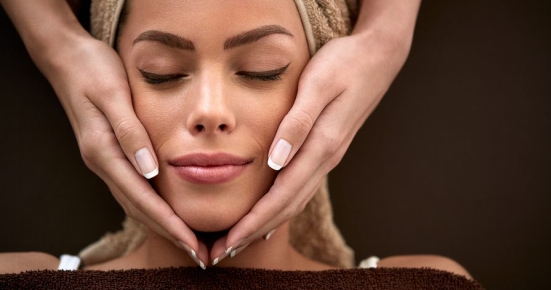[1] Trend 2: PackagingDespite the fact that the trends for cosmetic packaging of the future are partly linked to sustainability, this topic deserves its own attention.
10/03/2017 BY CLEBER BARROS, RESEARCHER IN COSMETIC DEVELOPMENT AT VINIA - INOVAÇÃO COSMÉTICA IN LATIN AMERICA, MARKET TRENDS, MARKETING TRENDS, TECHNOLOGY & COSMETIC INGREDIENTS.

To achieve success in the cosmetics industry, it is essential to know the raw materials that are available, their functions and how to combine them properly in order to build quality projects. But much more than knowing how to formulate a product, a good interaction needs to be built between the formulation and the consumer, giving them an image or a concept that is aligned with their lifestyle and their way of thinking so that they identify with the product. In a world that is so diverse and with constantly changing behaviour, it is crucial to be aware of tastes and trends so that all the effort employed in designing a cosmetic is transformed into the launch of a prominent product. The following are some of the current trends that are probably going to continue over the next few years
Trend 1: Sustainability
Consumers are increasingly aware of the importance of environmental preservation. In this sense, products with appeals that are related to saving resources and to the non-disposal of waste that is aggressive to the environment are gaining value. One environmental issue in particular deserves even greater attention: the water shortage. As consumption increases more than supply and consumers are warned about this problem, cosmetic brands will tend to change the way their products are made and the amount of water they use in their formulations. In a survey conducted by Mintel, it was reported that one-third of all consumers would pay more for equipment that would lead to water and energy savings in the UK. So if consumers reduce the use of these items in their day-to-day life, they will also expect the brands they use to do the same. This same survey also assesses that younger people will probably feel attracted to this type of product. A second recent survey by Mintel shows that 39% of all millennials prefer sustainable brands. [1, 2] Another point that has been widely debated is the use of microspheres in cosmetic products. Microspheres are spherical microparticles made of plastic, such as polypropylene, polystyrene and others of petrochemical origin, which are placed in some cosmetic and personal hygiene products as an abrasive. It just so happens that because microspheres are very small they are not filtered out by sewage treatment systems and are discarded in our oceans where they have a negative impact on the ecosystems of these places. For this reason, the tendency is that the use of microspheres will probably be banned by the end of 2017. [1, 3] Within the sustainability tendency, organic cosmetics will also continue gaining more and more ground. [1]
Trend 2: Packaging
Despite the fact that the trends for cosmetic packaging of the future are partly linked to sustainability, this topic deserves its own attention. Market research carried out by Technavio shows that with the rise of organic cosmetics and urbanization, the tendency is that there will be an increase in the demand for smaller, sustainable packaging, with units that are easy to use, load and discard. [1, 4] With regard to being sustainable, an increasing awareness of environmental issues means that the demand for recyclable packaging made from plastics or resins that are derived from renewable sources will increase, encouraging a reduction to a minimum in the use of non-biodegradable materials. The manufacturers of eco-friendly products are looking for packaging that alludes to the concept in order to use it as promoters of their brands and of “natural” or “organic” product lines. The decrease in size, on the other hand, is linked to the need for beauty and personal hygiene items for travel: so lightweight packages that are leak-proof and resistant to climate change are required. [4] On the other hand, and contrary to the decrease in size, Brazilians will tend to look for bigger packaging given the economic recession. With the rise in the unemployment rate and the decline in purchasing power, consumers will prefer products that last longer and need to be purchased less frequently. This is what Mintel’s 2015 report says about this subject: larger packaging will be more interesting because the same unit can be used various times, for longer and split with other members of the family. This is an opposite trend to that seen in the luxury segment, where packaging is smaller and more sophisticated. Even so, the trend of large packaging is trying to address the yearning for sustainability: after all, a discarded large glass bottle pollutes less than the disposal of several small glass bottles. [5] Still on the question of packaging, an interesting idea has recently been brought from Europe to Brazil: the fractioned sale of perfumes. With the rise in the value of the US dollar, Portuguese man, Patricio Gonçalves, the director of Ducha, saw the opportunity to start selling perfume in bulk, in 4 different size packages. This is an interesting strategy, seeing that 85% of the fragrances sold in Brazil come from international perfume houses. [6]
Trend 3: DIY (Do it yourself)
Still thinking about sustainability and a more natural lifestyle, some consumers will prefer to become more involved with the creative process of the cosmetics they use. This is how they will themselves guarantee that the products they are using are in fact composed of what they expect them to be. [1] Products that require easy and handcrafted processes, so that the consumer can make them at home, are the trend. They may be made available in the form of kits, as inspired by the food industry. [1, 2]
Trend 4: Neurocosmetics
Neurocosmetics are nothing new. The first time this term appeared officially was in 2007 at the Annual Meeting of the North American Society of Cosmetic Chemists. A neurocosmetic is a product whose active ingredients target the nerve endings of the skin, which are sensitive to heat, cold, pain, pruritus, and pressure. Since then, a number of active ingredients, such as synthetic biomimetic peptides that are capable of performing neuro-modulatory actions, have been developed. [7] The combination of well-being and sensory that are aroused by neurocosmetics attracts consumers who are seeking to balance their hectic everyday lives. The sensation of well-being may also be sought by those consumers who are sensitive to certain components in the formula and seek alternatives that do not cause skin irritation or inflammation. [8] According to Cosmetics Design, neurocosmetics tend to be found more easily in the class of anti-aging products, which are capable of producing a noticeable feeling of a smoother, more radiant, healthier, and less wrinkled skin. [8]
Trend 5: Pro–aging products
Contrary to the previous trend, the first pro-aging products are beginning to emerge. This is a trend linked to women’s liberation, in a proposal in which women get rid of the imposition of needing to look perfect all the time and the pressure of always appearing young, regardless of the stage of life they are in. As a result a new category of consumers has appeared: the silver category. [1, 9] Women in the silver category are over 50 years old and want to look healthy at the age they are. In this sense, cosmetics for the face correct the colour and promote hydration, but do not cover wrinkles or lead to a ‘face-lifting’ effect. In the hair segment, the idea is the same: do not mask, but soften the hair and give it back its shine. [9] This is a trend that is aligned with the concept of a more natural appearance, sometimes even without makeup. To extract the greatest possible potential from this segment, formulators should be aware of how people in the silver category would like to look. [9]
Trend 6: Seasonality
Still on the question of well-being, some consumers worry about the action of climate change on the skin and hair. So winter-related products, providing greater protection and hydration for dry skin in cold weather, are the trend. In the future, products aimed at cold and humid climates and at autumn climate change are coming. [10] Changes in the seasons throughout the year also have an influence on the emotions. There will be a demand for cosmetic innovations linked to winter depression and summer optimism. In particular, the fragrance industry will find opportunities in this tendency: according to Mintel’s survey, 67% of US fragrance users are interested in aromas that have an influence on mood and 23% of them would pay more for a product with such aromas. [10]
Trend 7: High-tech cosmetology
Consumers currently have at their disposal products and devices for monitoring health and well-being. Augmented reality is becoming increasingly familiar, and a possible next step for cosmetology is the use of applications, such as virtual mirrors and the real-time visualization of the effects of beauty products on the skin and hair. As a result, cosmetics will undergo increased pressure to demonstrate their effectiveness. [2]
Trend 8: Market niches
Finally, grouping consumers merely by generation or by ethnicity has currently become obsolete. It is necessary to scale down and develop formulations according to the tastes and needs of specific groups, providing solutions for different microeconomic environments. [1]
References:
[1] Pitman, S. Top ten cosmetic industry trends to look out for in 2016. Dez. 2015. Disponível em:http://www.cosmeticsdesign.com/Market-Trends/Top-ten-cosmetic-industry-trends-to-look-out-for-in-2016
[2] Mintel anuncia as quatro tendências de beleza que impactarão o mercado global até 2025. Disponível em:http://brasil.mintel.com/imprensa/beleza-cuidados-pessoais/mintel-anuncia-as-quatro-tendencias-de-beleza-que-impactarao-o-mercado-global-ate-2025
[3] Greenpeace. What are microbeads and why should we ban them? Disponível em:http://www.greenpeace.org.uk/blog/oceans/what-are-plastic-microbeads-and-why-should-we-ban-them-20160114
[4] Whitehouse, L. Organic cosmetics and convenience driving global packaging market. Ago. 2016. Disponível em: http://www.cosmeticsdesign-europe.com/Packaging-Design/Organic-cosmetics-and-convenience-driving-global-packaging-market
[5] Cosméticos com embalagens maiores são tendência no Brasil, segundo a Mintel. Mar. 2016. Disponível em:http://www.brazilbeautynews.com/cosmeticos-com-embalagens-maiores-sao-tendencia,1180
[6] Cosmetic Innovation. Venda de perfumes a granel é inovação para o mercado brasileiro. Ago 2016. Disponível em: http://www.cosmeticinnovation.com.br/venda-de-perfumes-granel-e-inovacao-para-o-mercado-brasileiro/
[7] Cosmetics Online. Neurocosméticos e produtos capilares. Dez 2008. Disponível em:http://www.cosmeticsonline.com.br/2011/noticias/detalhes-colunas1/243/neurocosm%C3%A9ticos+e+produtos+capilares
[8] Pitman, S. Will neurocosmetics be the next big trend? Out 2015. Disponível em:http://www.cosmeticsdesign.com/Brand-Innovation/Will-neuro-cosmetics-be-the-next-big-trend
[9] Yeomans, M. The pro-aging movement: the beauty of being old. Nov 2014. Disponível em:http://www.cosmeticsdesign-europe.com/Market-Trends/The-pro-ageing-movement-the-beauty-of-being-old
[10] Mintel. A divisão de beleza e cuidados pessoais da mintel anuncia seasonality como tendência de beleza. Mar 2015. Disponível em: http://brasil.mintel.com/imprensa/beleza-cuidados-pessoais/a-divisao-de-beleza-e-cuidados-pessoais-da-mintel-anuncia-seasonality-como-tendencia-de-beleza




